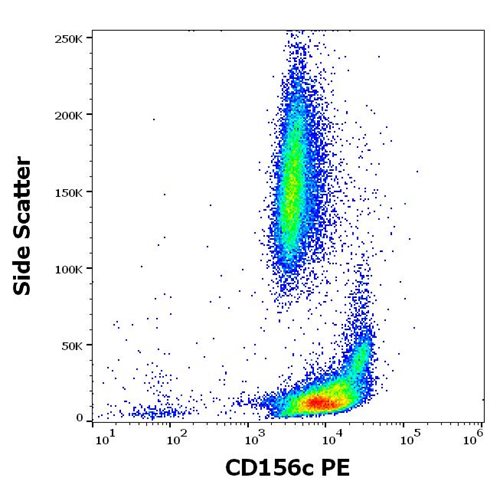Recombinant Human TGF-Beta3(Discontinued)
Shipping Info:
For estimated delivery dates, please contact us at [email protected]
| Amount : | 10 µg |
| Purification : | Purity: >= 98% by SDS-PAGE gel and HPLC analyses. |
| AA sequence : | ALDTNYCFRN LEENCCVRPL YIDFRQDLGW KWVHEPKGYY ANFCSGPCPY LRSADTTHST VLGLYNTLNP EASASPCCVP QDLEPLTILY YVGRTPKVEQ LSNMVVKSCK CS |
| Alternative Name : | Transforming Growth Factor-Beta3 |
Source:E.coli
The three mammalian isoforms of TGF-Beta, TGF-Beta1, Beta2, and Beta3, signal through the same receptor and elicit similar biological responses. They are multifunctional cytokines that regulate cell proliferation, growth, differentiation and motility, as well as synthesis and deposition of the extracellular matrix. They are involved in various physiological processes, including embryogenesis, tissue remodeling and wound healing. They are secreted predominantly as latent complexes, which are stored at the cell surface and in the extracellular matrix. The release of the biologically active TGF-Beta isoform from a latent complex involves proteolytic processing of the complex and/or induction of conformational changes by proteins such as thrombospondin-1. The physiological role of TGF-Beta3 is still unknown, but its expression pattern suggests a role in the regulation of certain development processes. Recombinant Human TGF-Beta3 is a 25.0 kDa protein composed of two identical 112 amino acid polypeptide chains linked by a single disulfide bond.
The three mammalian isoforms of TGF-Beta, TGF-Beta1, Beta2, and Beta3, signal through the same receptor and elicit similar biological responses. They are multifunctional cytokines that regulate cell proliferation, growth, differentiation and motility, as well as synthesis and deposition of the extracellular matrix. They are involved in various physiological processes, including embryogenesis, tissue remodeling and wound healing. They are secreted predominantly as latent complexes, which are stored at the cell surface and in the extracellular matrix. The release of the biologically active TGF-Beta isoform from a latent complex involves proteolytic processing of the complex and/or induction of conformational changes by proteins such as thrombospondin-1. The physiological role of TGF-Beta3 is still unknown, but its expression pattern suggests a role in the regulation of certain development processes. Recombinant Human TGF-Beta3 is a 25.0 kDa protein composed of two identical 112 amino acid polypeptide chains linked by a single disulfide bond.
The ED50 was determined by TGF-Beta3Â’s ability to inhibit the mouse IL-4-dependent proliferation of mouse HT-2 cells is <= 0.05 ng/ml, corresponding to a specific activity of >= 2 x 107 units/mg.Â
For Research Use Only. Not for use in diagnostic/therapeutics procedures.
|
There are currently no product reviews
|
















.png)








